Today has been National Korean War Armistice Day, where the nation remembers and honors Korean War veterans.
The Koreas are situated smack dab in the middle between China, Russia, and Japan, and have been “caught up in their conflicts” for centuries. Japan controlled the country from around 1910 to 1945, when they surrendered and subsequently forfeited control of Korea. The United States and the Soviet Union agreed that Korea should be independent but disagreed on how that should come about. The 38th Parallel was established to separate the U.S.-backed South from the Soviet-backed North. On June 25, 1950, at around 5 o’clock in the morning, North Korean troops “poured across the 38th Parallel,” ushering in the Cold War’s first great conflict. American troops entered the fray the next month. The United States saw the war as “a symbol of the global struggle between east and west, good and evil”1)History.com Editors. 2009. “Korean War.” History. Nov 9. Web. and, ultimately, a fight against the spread of communism:
If we let Korea down, the Soviet[s] will keep right on going and swallow up one [place] after another.
– President Harry Truman 2)History.com Editors. 2009. “Korean War.” History. Nov 9. Web.
Truce negotiations occurred throughout the war: “158 meetings spread over two years and 17 days.” A ceasefire agreement between the Republic of Korea (South, ROK) and the North Korean People’s Army (NKPA) was signed by representatives from the United States (also the United Nations Command delegate), North Korea, and China.3)The North Korean side was also called the People’s Democratic Republic of Korea, the North Korean Army (NKA) and the Korean People’s Army (KPA)
In the United States, the Korean War has been called the Forgotten War, wedged between World War II and Vietnam, two armed conflicts that brought global, wide-ranging media attention for varying reasons. Aside from the television show M.A.S.H., Korean War soldiers from the U.S. saw little to no media attention and seemed to become a living visual for American apathy.
Today is a special time set aside to remember, thank, and honor Korean War veterans who fought, incurred injuries, or gave the ultimate sacrifice. Though success and victory may have taken some time to appear, the heroic sacrifices are seen today in a prosperous, democratic South Korea, and, in a larger sense, an involvement in demolishing the Berlin Wall, as well as the end of the Union of Soviet Socialist Republics (USSR).
Jim Gifford, in his Kentucky Monthly article “In Praise of Appalachian Soldiers,” quotes research by Pat Arnow and Bert Allen: “Appalachian soldiers in the Korean War comprised eight percent of the fighting force and received 18 percent of the Medals of Honor.” Appalachia Bare’s motto is, “Revealing Appalachia Story by Story.” We would like to pay tribute to Korean War veterans from Appalachia. Please read the heroic stories of our brave soldiers below. A small gallery follows. (**Trigger Warning: Stories of violence, death, and images of the same)
Willie Isaacs– West Liberty, Kentucky
In the war, Isaacs was assigned as a truck driver “to an engineering unit which built bridges and roads.”4)Hicks, Roger D. 2019. “Korean War Photographs–Willie Isaac.” My Appalachian Life. July 9. Web.. He says he never experienced combat in the region. He tells the following tale to Roger D. Hicks about where the soldiers in his unit retrieved water:
“. . . one day after they pumped a truck load of water they found five dead Korean bodies in the water upstream above where they were pumping the water.” He says that he tried to not drink anymore water for several days after that.
![]()
Charles George – Birdtown, Cherokee, North Carolina
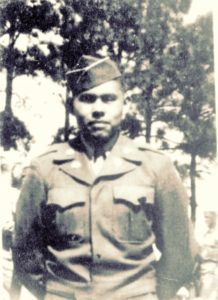
Charles George was a Cherokee Native American of the Bird Clan. His Cherokee name was “Tsali,” which translates to Charlie in English, and “is a name synonymous with self-sacrifice” in Cherokee history.
PFC Charles George was assigned to Company C, 179th Infantry Regiment, 45th Infantry Division. In 1952, Company C was assigned to an area near Seoul to “engage” the Chinese and “capture a prisoner for interrogation.”5)U.S. Department of Veterans Affairs. 2015. “The Quiet Warrior from Birdtown.” U.S. Department of Veterans Affairs. May 11. Updated – Web. Charles George was alongside Armando Ruiz, and Marion Santo. Once they arrived, they fought through heavy fire and mortar rounds. They fought in “hand to hand combat.” They were successful in pushing back the enemy and in capturing the prisoner. Their patrol leader ordered them to “provide cover”6)U.S. Department of Veterans Affairs. 2015. “The Quiet Warrior from Birdtown.” U.S. Department of Veterans Affairs. May 11. Updated – Web. so Company C could head back to camp. The three men were alone and “waited for the Chinese to retake the hill.” The following is an excerpt from a page devoted to Charles George on the U.S. Department of Veterans Affairs:
Weapons in hand and facing north, Charles George was on the left side of the trench, Marion Santo was in the middle, and Armando Ruiz secured the far right flank. When the enemy grenade landed, Corporal Ruiz didn’t see it hit the ground; all he heard was Charlie yelling for him to get out of the way. PFC Santo was closest to the grenade. Before fully realizing what was happening, Santo felt a huge jolt that sent him flying. It wasn’t the grenade concussion that caused him to go airborne; it was Charlie. PFC George shoved Santo with everything he had, turned back to the danger, and threw himself on the grenade, absorbing the full impact with his body. In an instant, Charles George had recognized the dire situation and took control to save his people.
Mortally wounded, PFC George remained conscious. Rolling him over, Santo and Ruiz saw the intense pain in George’s eyes. As life drained from his body, Charlie knew there was one last thing he could do to help his friends. Crying out in pain would have alerted the oncoming Chinese to their position and assured that all three men would have died that night. PFC George did not make a sound – not even a whimper.
As quickly [as] they could, Ruiz and Santo carried Charlie back to the aid station where medics tried in vain to save him. Nothing could be done to stop the inevitable, and in the early hours of November 30, 1952, Charles George succumbed to his wounds.
Charles George was posthumously awarded the Medal of Honor.
![]()
James Melvin Rudd – Salyersville, Kentucky
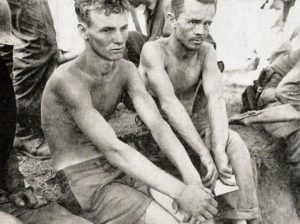
In August 1950, twenty-six U.S. soldiers were captured by North Koreans. Their “hands were bound and their boots were stolen.” Soon after, the number of U.S. POWs totaled forty-five. They were subsequently “led to a ravine where they were all shot with their hands still tied. Only 4 survived.”7) Stilwell, Blake. 2021. “7 horrifying atrocities of the Korean War.” We Are the Mighty. Feb 12. Web. James Melvin Rudd was one of those survivors. The incident became known as The Hill 303 Massacre. Another survivor, Cpl. Roy Manring Jr. testified:
They come by and they started kicking and you could hear the fellows hollering, grunting, groaning, and praying, and when they kicked me they kicked my leg and I made a grunting sound and that’s when I caught it in the gut, got shot in the gut . . .
Rudd’s story can be found in the book Massacre at Hill 303 by Basil B. Clark.
![]()
John Gentry – Ashe County, North Carolina
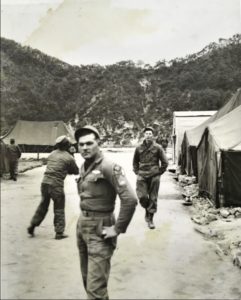
On Heartbreak Ridge, Gentry was wounded, “hit by shrapnel.” His most prized medal is his Combat Infantry Badge.
We did no more than anyone else – we did our job and tried to keep our nose clean. – John Gentry8)Ashe County Veterans History Project. 2021. “John Gentry.” Ashe County Veterans History Project. July 27. Updated – Web.
![]()
Colonel Ruby Bradley – Spencer, West Virginia
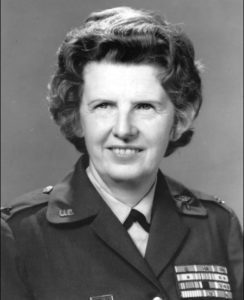
Ruby Bradley is “one of the most decorated women in U.S. military history.” She served as a nurse in World War II and was a prisoner of war in Santo Tomas Internment Camp in Manila, a Japanese POW camp. She was a “frontline Army nurse in evacuation hospitals in Korea.”9)Arlington National Cemetery Website. 2002. “Ruby Bradley – Colonel, United States Army.” Arlington National Cemetery Website. Sept 22. Web. Even when surrounded by 100,000 Chinese forces, Bradley refused to leave until all the sick and wounded Korean War soldiers were safe on a plane.
She received 34 medals and citations of bravery including:
- Two Legion of Merit medals
- Two Bronze stars
- Two Presidential Emblems
- The World War II Victory Medal
- The U.N. Service Medal
- The Meritorious Unit Emblem
- The American Defense Service Medal
- The American Campaign Medal
- The Asiatic-Pacific Campaign Medal
- The Army Occupational Medal with Japan clasp
- Three Korea Service medals
- The Philippine Liberation Medal
- The Philippine Independence Ribbon
- The Florence Nightingale Medal, the highest international honor of the Red Cross10)Arlington National Cemetery Website. 2002. “Ruby Bradley – Colonel, United States Army.” Arlington National Cemetery Website. Sept 22. Web.
The Arlington National Cemetery website provides a little information about Bradley’s bravery:
[At] Santo Tomas Internment Camp in Manila . . . she and several other imprisoned nurses earned the title “Angels in Fatigues” from fellow captives. For the next several months, she provided medical help to the prisoners and sought to feed starving children by shoving food into her pockets whenever she could, often going hungry herself. The weight she shed made room in her uniform for smuggling surgical equipment into the prisoner-of-war camp that she used to assist in 230 operations and deliver 13 children.
On February 3, 1945, U.S. troops stormed the gates of the Japanese camp and liberated Colonel Bradley and her fellow prisoners, ending her three years of captivity. At 80 pounds, Colonel Bradley returned home to West Virginia and waited five years before returning to the battlefield during the Korean War.
![]()
Alonzo Clayton Phipps – Ashe County, North Carolina
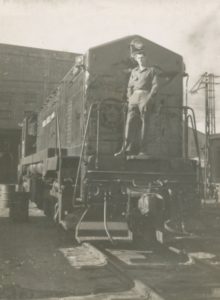
Phipps was a PFC assigned as a diesel mechanic to the 765th Transportation Railway Shop Battalion during the war. The railroad system provided the only way of bringing troops and supplies to areas in Korea.11)Ashe County Veterans History Project. 2021. “Alonzo Clayton Phipps.” Ashe County Veterans History Project. July 27. Web.
The fighting ended on July 23, 1953, when the Korean Armistice Agreement was signed. The agreement created the Korean Demilitarized Zone (DMZ) to separate North and South Korea and allowed the return of prisoners. Part of the duties of the railway was transporting the dead bodies back to each one’s country. Phipps said the bodies were loaded onto the cars, stacked like cordwood.12)Ashe County Veterans History Project. 2021. “Alonzo Clayton Phipps.” Ashe County Veterans History Project. July 27. Web.
![]()
John Bob Elwell – Fayetteville, West Virginia
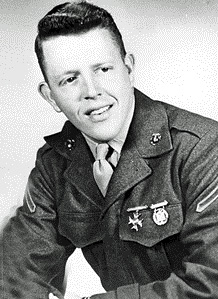
Elwell was a PFC who served in Company A, 1st Battalion, 5th Marines, 1st Marine Division. Elwell was also a barber and he gave many a haircut to his fellow soldiers. He was a man of great Christian faith and was given the endearing nickname “the sneaky evangelist” because he shared his faith with each haircut.
On February 3, 1953, he was killed in action during the Battle of Ungkok. Appalachian Magazine presents Leatherneck Magazine’s findings on Elwell’s actions:
According to a February 2003 article in Leatherneck Magazine, Elwell “took up an exposed position” in order to redirect fire away from his fellow soldiers, “then single-handedly attacked” an enemy bunker with carbine fire and grenades.
“Minutes later, leading his squad into the main Chinese trench line, John Elwell was struck and mortally wounded by fragments from a near-direct hit by an 82 mm mortar.”
For his incredible bravery, John Bob Elwell was posthumously awarded The Navy Cross and The Purple Heart.
![]()
Korean War Gallery
**Featured Image of one of the 19 sculpted soldiers at the Korean War Memorial – U.S. Navy – picryl
References
| ↑1, ↑2 | History.com Editors. 2009. “Korean War.” History. Nov 9. Web. |
|---|---|
| ↑3 | The North Korean side was also called the People’s Democratic Republic of Korea, the North Korean Army (NKA) and the Korean People’s Army (KPA) |
| ↑4 | Hicks, Roger D. 2019. “Korean War Photographs–Willie Isaac.” My Appalachian Life. July 9. Web. |
| ↑5, ↑6 | U.S. Department of Veterans Affairs. 2015. “The Quiet Warrior from Birdtown.” U.S. Department of Veterans Affairs. May 11. Updated – Web. |
| ↑7 | Stilwell, Blake. 2021. “7 horrifying atrocities of the Korean War.” We Are the Mighty. Feb 12. Web. |
| ↑8 | Ashe County Veterans History Project. 2021. “John Gentry.” Ashe County Veterans History Project. July 27. Updated – Web. |
| ↑9, ↑10 | Arlington National Cemetery Website. 2002. “Ruby Bradley – Colonel, United States Army.” Arlington National Cemetery Website. Sept 22. Web. |
| ↑11, ↑12 | Ashe County Veterans History Project. 2021. “Alonzo Clayton Phipps.” Ashe County Veterans History Project. July 27. Web. |
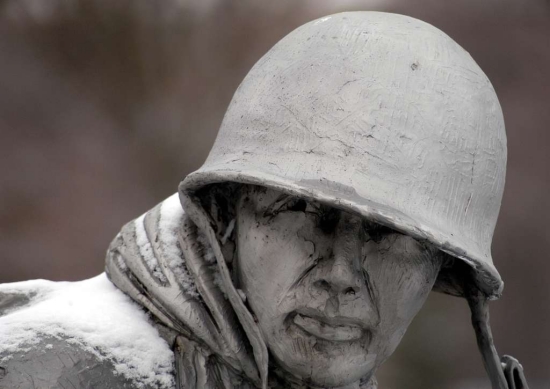


















Hello,
I appreciate the fact that you listed my blog post about my friend & neighbor, Willie Isaac, and his service in Korea on this blog post. However, the link you used goes to the ever changing, most recent post on my blog. I’d like to suggest that you use this link below which will connect your users directly to the blog post about Willie along with the related photos which Willie took during his service in the US Army. Thanks!
Roger D. Hicks
http://myappalachianlife.blogspot.com/2019/07/korean-war-photographs-willie-isaac.html
Hello Mr. Hicks,
Thank you so much for providing the better link to Mr. Isaac’s story and photos. One of our primary goals is to try and amplify our Appalachian stories as much as possible.
I would appreciate it if you would please contact me at admin@appalachiabare.com, as I’m having some trouble with the link provided and would very much like to resolve the issue.
Best regards,
Tom,
Appalachia Bare Admin